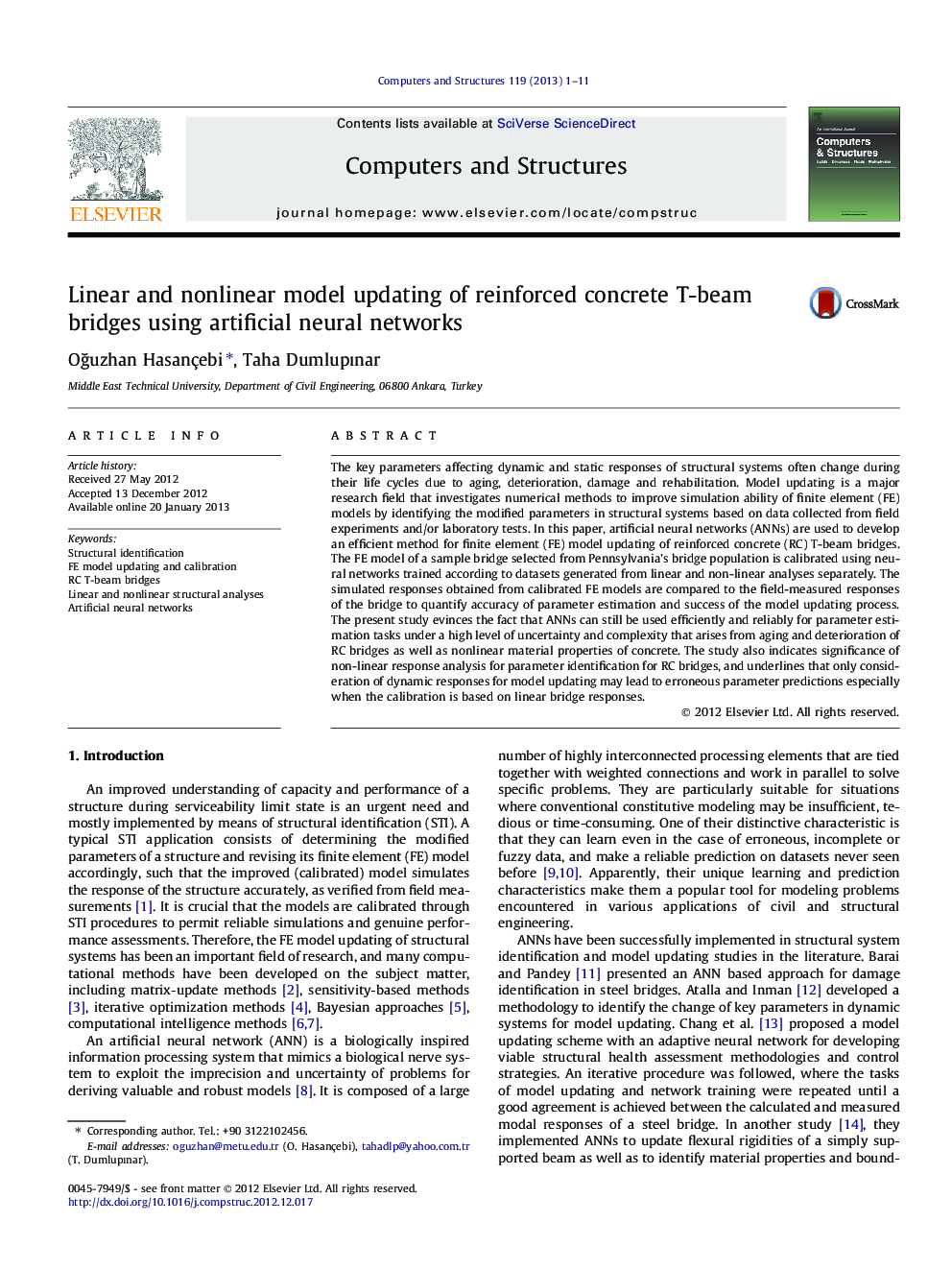| Article ID | Journal | Published Year | Pages | File Type |
|---|---|---|---|---|
| 510619 | Computers & Structures | 2013 | 11 Pages |
The key parameters affecting dynamic and static responses of structural systems often change during their life cycles due to aging, deterioration, damage and rehabilitation. Model updating is a major research field that investigates numerical methods to improve simulation ability of finite element (FE) models by identifying the modified parameters in structural systems based on data collected from field experiments and/or laboratory tests. In this paper, artificial neural networks (ANNs) are used to develop an efficient method for finite element (FE) model updating of reinforced concrete (RC) T-beam bridges. The FE model of a sample bridge selected from Pennsylvania’s bridge population is calibrated using neural networks trained according to datasets generated from linear and non-linear analyses separately. The simulated responses obtained from calibrated FE models are compared to the field-measured responses of the bridge to quantify accuracy of parameter estimation and success of the model updating process. The present study evinces the fact that ANNs can still be used efficiently and reliably for parameter estimation tasks under a high level of uncertainty and complexity that arises from aging and deterioration of RC bridges as well as nonlinear material properties of concrete. The study also indicates significance of non-linear response analysis for parameter identification for RC bridges, and underlines that only consideration of dynamic responses for model updating may lead to erroneous parameter predictions especially when the calibration is based on linear bridge responses.
► Application of ANNs on parameter estimation of a real RC T-beam bridge. ► Aging, deterioration and material non-linearity in RC bridges impose challenge. ► The study reveals potentials of ANNs for most complicated model updating studies. ► Linear and non-linear response analyses based model updating are compared. ► The use of dynamic responses only may lead to erroneous parameter predictions.
